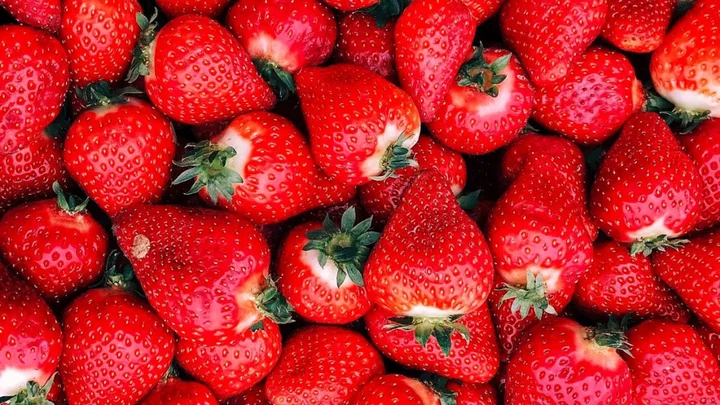
Biggest-ever simulation of the universe could finally explain how we got here
It’s one of the biggest questions humans have asked themselves since the dawn of time, but we might be closer than ever to understanding how the universe developed the way it did and we all came to be here. Computer simulations are happening all the time in the modern world, but a new study is attempting to simulate the entire universe in an effort to understand conditions in the far reaches of the past. Full-hydro Large-scale structure simulations with All-sky Mapping for the Interpretation of Next Generation Observations (or FLAMINGO for short), are being run out of the UK. The simulations are taking place at the DiRAC facility and they’re being launched with the ultimate aim of tracking how everything evolved to the stage they’re at now within the universe. The sheer scale of it is almost impossible to grasp, but the biggest of the simulations features a staggering 300 billion particles and has the mass of a small galaxy. One of the most significant parts of the research comes in the third and final paper showcasing the research and focuses on a factor known as sigma 8 tension. This tension is based on calculations of the cosmic microwave background, which is the microwave radiation that came just after the Big Bang. Out of their research, the experts involved have learned that normal matter and neutrinos are both required when it comes to predicting things accurately through the simulations. "Although the dark matter dominates gravity, the contribution of ordinary matter can no longer be neglected, since that contribution could be similar to the deviations between the models and the observations,” research leader and astronomer Joop Schaye of Leiden University said. Simulations that include normal matter as well as dark matter are far more complex, given how complicated dark matter’s interactions with the universe are. Despite this, scientists have already begun to analyse the very formations of the universe across dark matter, normal matter and neutrinos. "The effect of galactic winds was calibrated using machine learning, by comparing the predictions of lots of different simulations of relatively small volumes with the observed masses of galaxies and the distribution of gas in clusters of galaxies," said astronomer Roi Kugel of Leiden University. The research for the three papers, published in the Monthly Notices of the Royal Astronomical Society, was undertaken partly thanks to a new code, as astronomer Matthieu Schaller of Leiden University explains. "To make this simulation possible, we developed a new code, SWIFT, which efficiently distributes the computational work over 30 thousand CPUs.” Sign up for our free Indy100 weekly newsletter How to join the indy100's free WhatsApp channel Have your say in our news democracy. Click the upvote icon at the top of the page to help raise this article through the indy100 rankings
2023-11-16 23:49

Water discovered to be leaking from Earth's crust into the planet's core
There is much we still don’t know about the inside of our planet – but scientists recently discovered water is slowly leaking down there from the surface. It’s not a simple journey. The liquid is dripping down descending tectonic plates, before eventually reaching the core after a 2,900 kilometre journey. And while the process is slow, it has over billions of years formed a new surface between the molten metal of the outer core and the outer mantle of the Earth. In a new study, scientists at Arizona State University have said the water is triggering a chemical reaction, creating the new layer, which is “few hundred kilometres thick”. (That’s “thin” when it comes to the inner layers of the Earth.) “For years, it has been believed that material exchange between Earth's core and mantle is small. Yet, our recent high-pressure experiments reveal a different story. “We found that when water reaches the core-mantle boundary, it reacts with silicon in the core, forming silica," co-author Dr Dan Shim wrote. “This discovery, along with our previous observation of diamonds forming from water reacting with carbon in iron liquid under extreme pressure, points to a far more dynamic core-mantle interaction, suggesting substantial material exchange.” So what does it mean for all of us up on the surface? The ASU release said: “This finding advances our understanding of Earth's internal processes, suggesting a more extensive global water cycle than previously recognised. “The altered ‘film’ of the core has profound implications for the geochemical cycles that connect the surface-water cycle with the deep metallic core.” How to join the indy100's free WhatsApp channel Sign up to our free indy100 weekly newsletter Have your say in our news democracy. Click the upvote icon at the top of the page to help raise this article through the indy100 rankings.
2023-11-16 21:19

Japan’s Ispace to Launch Second Moon Mission After Crash
Japanese space startup Ispace Inc. will reach for the moon again after its first attempt to land a
2023-11-16 11:28

New language discovered in the ruins of an ancient empire
Ancient clay tablets unearthed from ancient ruins in Turkey by archaeologists have revealed a language lost to the passages of time. The new language was discovered in the ancient capital of the Hittite Empire at Hattusa (known as Boğazköy-Hattusha). The well-preserved tablets are among many incredible artworks found at the site - a UNESCO World Heritage Site. Over the past four decades, researchers have dusted off nearly 30,000 unique tablets - with most written in Hittite. New research, however, shows that some of the tablet haul shows that they are written in a language previously unknown to modern man. Of course, the meaning and words of this language have not been deciphered, but it appears from early inspection to branch off from languages used within the Hittite Empire - and is being referred to as Kalašma. archaeologist Interestingly though, researchers from the Istanbul Department of the German Archaeological Institute have noted that the new language is found within a recitation in a 'cultic ritual text'. While that's usually the basis of a middling horror movie, we're certain that there's nothing to worry about - it stems from an ancient Hittite practice. Professor Daniel Schwemer explains that the discovery wasn't unexpected. "The Hittites were uniquely interested in recording rituals in foreign languages," he said. These ritual texts provide insight into little-known languages, and thanks to this discovery, one more has been added to the list. Sign up for our free Indy100 weekly newsletter Have your say in our news democracy. Click the upvote icon at the top of the page to help raise this article through the indy100 rankings.
2023-11-15 19:59

China’s Top Solar Province Boosts Payments for Battery Storage
China’s top province for solar power will increase payments for battery storage plants to incentivize investment in the
2023-11-15 15:26

Scientists discover that sperm can ‘defy the laws of physics’
Sperm can “defy the laws of physics”, according to new research. The laws of motion have helped us to comprehend the behaviours of the natural world for centuries, but sperm appears to go against one of the laws set down by Isaac Newton. Kenta Ishimoto and his fellow mathematical scientists from Kyoto University have revealed new research which suggests that sperm actually display qualities which don't follow Newton’s third law of motion. Science enthusiasts will know that the third law states that “for every action, there is an equal and opposite reaction”. However, sperm seems to go against this. According to their research, the tails of sperm known as “flagella” have an “odd elastic” quality which makes them able to travel through viscous fluids without losing much energy. While scientists would normally expect them to be slowed down by the viscous fluids, they’re able to propel themselves forward much easier than researchers would have predicted – and seemingly avoid coming into contact with an equal and opposite reaction. "From solvable simple models to biological flagellar waveforms for Chlamydomonas and sperm cells, we studied the odd-bending modulus to decipher the nonlocal, nonreciprocal inner interactions within the material,” the team behind the study said. "Odd elasticity is not a generic term for activity in solids, but rather a well-defined physical mechanism that generates active forces in solids or in other systems in which a generalized elasticity can be defined without using an elastic potential." Sign up for our free Indy100 weekly newsletter How to join the indy100's free WhatsApp channel Have your say in our news democracy. Click the upvote icon at the top of the page to help raise this article through the indy100 rankings
2023-11-15 01:21

Find out who is taking a peek at your Snapchat messages with new paid feature
Sometimes when a friend sends you a message on Snapchat, for whatever reason you could take a sneak peek by half swiping on the message. But, there's now a new feature on Snapchat Plus where users can see if their friends have half-swiped on the message - so a lot of Snapchatters could be caught out with this tool. However, if you want to get this feature yourself and catch your pals out with the half-swipe read then it costs $3.99/£3.99 per month for a Snapchat Plus account which would enable you to get a range of exclusive and experimental features such as Best Friends Forever. Here is how to toggle on the feature: Once subscribed to Snapchat Plus, click on your Bitmoji to go to your profile Tap the ‘Settings’ in the top right Scroll down to ‘Peek a Peek’ Move the slider to the green ‘On’ position You can now see which friends are trying to be stealthy. For those wanting to try Snapchat Plus, you can subscribe by going to your profile and pressing the Snapchat+ banner card at the top, then select a subscription and purchase before closing and reopening the app to see the benefits. Something to remember next time if you're contemplating this half-swipe tactic. How to join the indy100's free WhatsApp channel Sign up to our free Indy100 weekly newsletter Have your say in our news democracy. Click the upvote icon at the top of the page to help raise this article through the indy100 rankings.
2023-11-14 23:54

99 per cent of Netflix users don’t use this one part of the service
Netflix is a popular streaming platform with over 250 million subscribers, but there's one feature that the majority of users do not use at all. The streaming services are not only home to thousands of TV series and films, but there are also plenty of video games to play. Gaming studios such as Night School Studios, which developed the Oxenfree games were acquired by the company. Despite the development of Oxenfree 2 exclusively for Netflix, the statistics show that most subscribers are not aware of or just don't use this feature that comes free with their subscription. There are up to 70 games on the app which are on the Netflix app under the 'Mobile Games' section, where there are games based on the most popular shows such as Squid Game, Stranger Things, The Queen's Gambit, Black Mirror, and reality shows such as Love Is Blind and Too Hot To Handle. Other award-winning titles also include Immortality, Kentucky Route Zero and Before Your Eye. Only 2.2 million Netflix subscribers (0.88 per cent approximately) play one of the streamer’s games daily, as per a CNBC report. But it appears there is a struggle to get subscribers to return to the video games after trying them, since more than 70 million subscribers at some time have downloaded a game. Perhaps, this issue could be due to games taking up more download space, and commitment for users. Although stats show subscribers are not playing video games, the streaming giant has been splashing the cash in this area since in the last year, the quantity of games available has tripled. But Co-CEO Greg Peters, says this is all part of the "crawl, walk, run" strategy that has successfully worked in the past. “This trajectory is not dissimilar from what we’ve seen before,” Peters said on the company’s prerecorded earnings call on Wednesday, CNBC reported. “When we’ve launched a new region, or when we launched new genres, like unscripted” we had to “crawl, walk, run, but we see a tremendous amount of opportunity to build a long-term centre value of entertainment.” How to join the indy100's free WhatsApp channel Sign up to our free Indy100 weekly newsletter Have your say in our news democracy. Click the upvote icon at the top of the page to help raise this article through the indy100 rankings.
2023-11-14 20:58

Eating strawberries can reduce the risks of dementia, study finds
A recent study has found that eating strawberries daily could reduce the risk of developing dementia. Researchers at the University of Cincinnati claim that by eating the fruit every day, certain people of middle age could reduce their risk of dementia. The 12-week study published in Nutrients had 30 overweight patients - who had complained of mild cognitive impairment - abstain from eating berries, aside from a daily packet of supplement powder mixed with water and consumed with breakfast. Half of the participants, who were 50 to 65 years old, received a powder that contained the equivalent of one cup of whole strawberries (the standard serving size), whilst the other half received a placebo. Participants' long-term memory, mood, and metabolic health were measured by researchers. The team found that those who had taken the strawberry powder had performed better on a wordlist learning test, as well as having a significant reduction in depressive symptoms. "Both strawberries and blueberries contain antioxidants called anthocyanins, which have been implicated in a variety of berry health benefits such as metabolic and cognitive enhancements," said Robert Krikorian, professor emeritus in the UC College of Medicine's Department of Psychiatry and Behavioural Neuroscience. "There is epidemiological data suggesting that people who consume strawberries or blueberries regularly have a slower rate of cognitive decline with ageing." Ellagitannins and ellagic acid are also found in strawberries, which are known to possess anti-inflammatory, antioxidant, antimicrobial, and anticancer properties. Krikorian went on to explain that strawberries may have improved cognitive function by reducing inflammation in the brain. "Executive abilities begin to decline in midlife and excess abdominal fat, as in insulin resistance and obesity, will tend to increase inflammation, including in the brain," he explained. The university did, however, acknowledge that Krikorian's research was partly funded by the California Strawberry Commission. Although said that the group had no role in the design of the study, data collection and analysis, or publication of the results. Sign up to our free Indy100 weekly newsletter Have your say in our news democracy. Click the upvote icon at the top of the page to help raise this article through the indy100 rankings. How to join the indy100's free WhatsApp channel
2023-11-13 20:48

First Starship Passenger Makes New Plans While Waiting for Musk
As Elon Musk prepares to test his Starship rocket for the first time since an April takeoff ended
2023-11-13 18:15

TotalEnergies to Buy Gas Power Plants in Texas for $635 Million
TotalEnergies SE agreed to buy three natural gas-fired power plants in Texas from TexGen Power LLC for $635
2023-11-13 15:53

One Dose of Lilly’s Novel Heart Drug Cut Risk Factors for a Year
A single dose of an experimental drug from Eli Lilly & Co. cut by 94% a risk factor
2023-11-13 09:27
